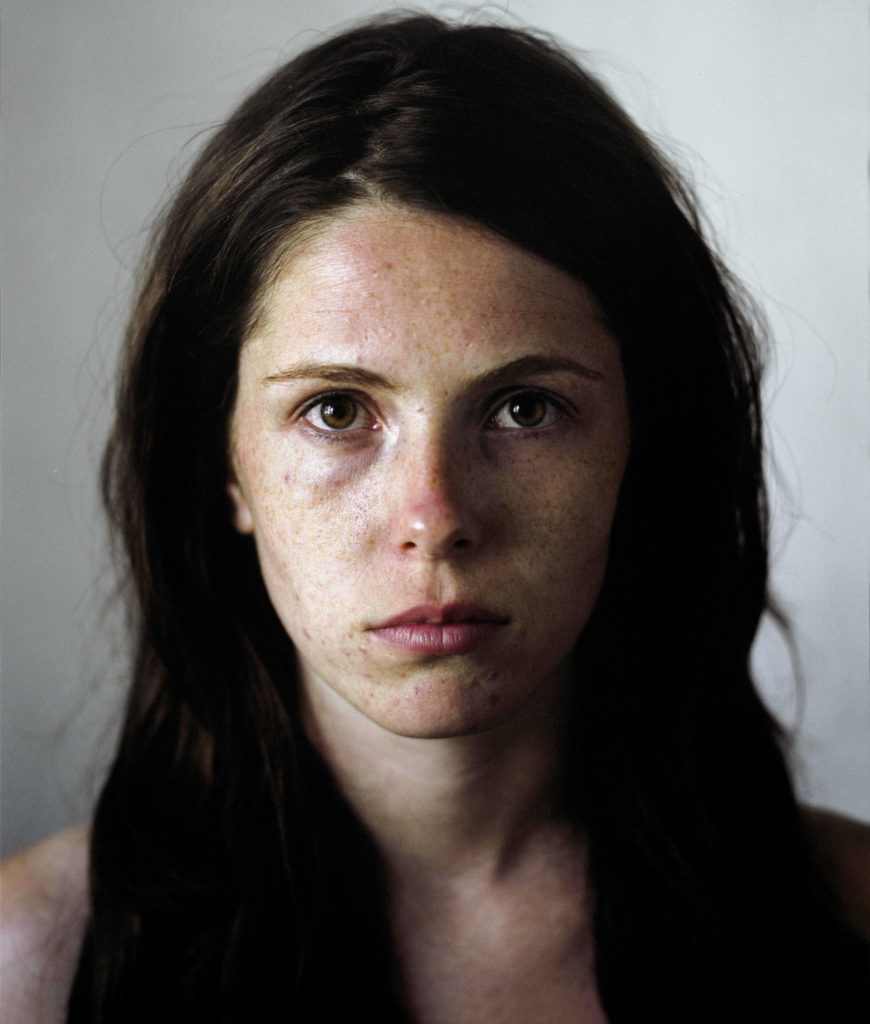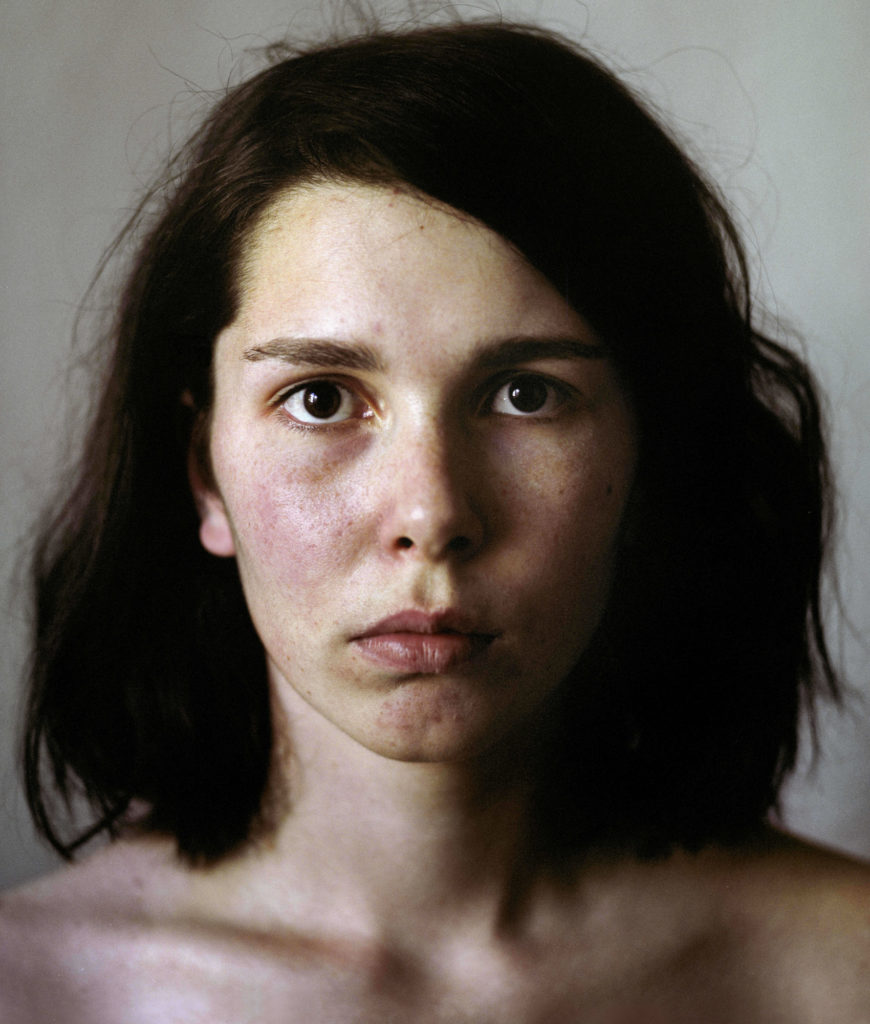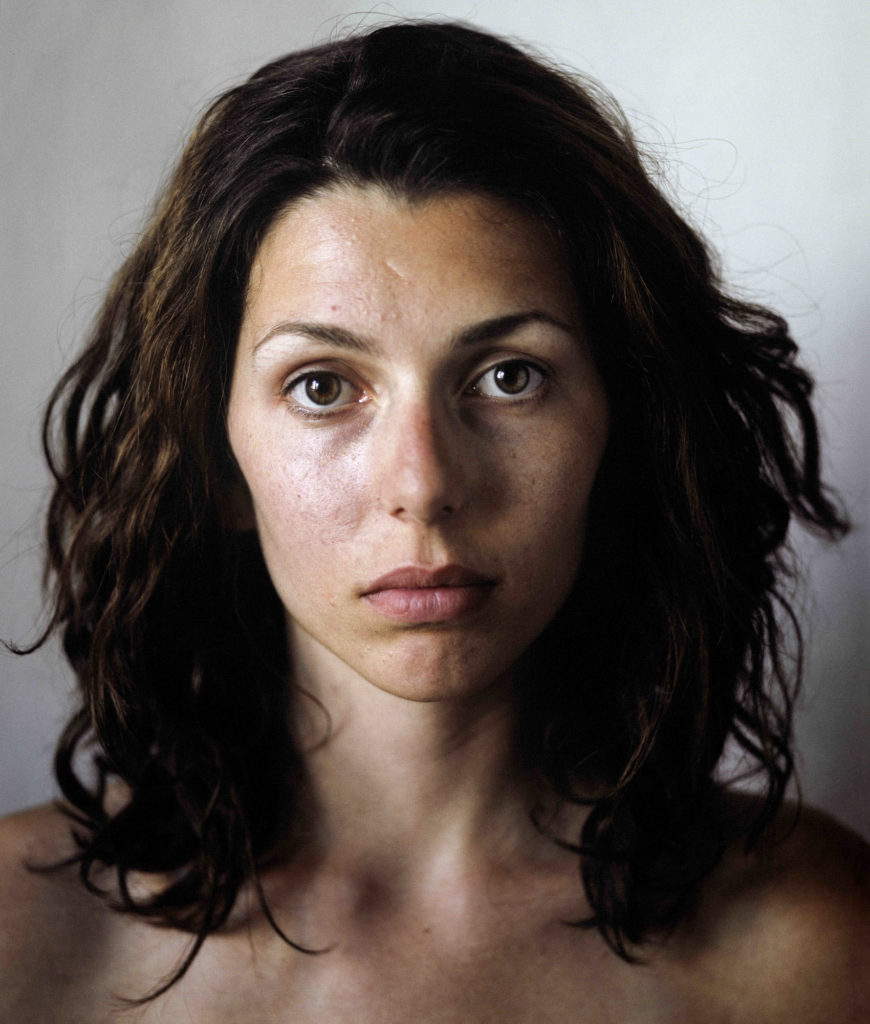Glorija Lizde was born in Split, Croatia. She graduated with a Bachelor’s degree in Film and Video at the Academy of Arts Split and a Master’s degree in Photography at the Academy of Dramatic Art in Zagreb. Her photographic work revolves around themes of family, memory and identity. Her practice relies on research work, archives and the use of psychiatry, phototherapy and symbolism. The photographs that emerge are a symbiosis of documentary and staged fragments, existing somewhere between reality and a dream.
There are so many titles that include technical photography terms and the viewers will eventually relate your project title with that, but in your case ‘F20.5’ stands for residual schizophrenia. This apt title selection may imply the therapeutic quality of photographing. Why and how can the medium of photography be a therapeutic instrument?
Photography is, as you said, a medium of expression and therefore it automatically has a certain therapeutic quality since it serves as a tool for creative output. If you are someone taking daily snapshots, photography can be therapeutic in a way that it helps you detach from certain situations and viewfinder serves as a shield for that. Maybe it helps you remember things, go through them or even forget them. On a more concrete level, there are techniques used in therapy and psychoanalysis which I looked at a lot when beginning to work on F20.5. One of the techniques is to put yourself in the position of another person by dressing up, mimicking their body language or being in places which you connect with that person. I combined all of three in my work by photographing in the same locations where my father experienced hallucinations and often putting my body in the same positions. For me, it put things into perspective, just being in these places and thinking about what he went through. It is a great exercise and just that could have therapeutic effects but photographing it gives it another layer and serves as a kind of closure, something that has been photographed is perceived as past.
When did you realize the series? Did it come naturally as you were reviewing-sequencing your photographs or it had a certain starting point?
This series was realized in three years ending in 2018. It was my Master’s degree photography project and it included a lot of planning, researching and sketching. It started in 2015. when I was proposing a degree project to my college professors, and in the beginning, I wanted to work with patients in mental institutions, but then I realized what I have been searching outside is already here and decided to turn the camera toward myself, my father and my family. It was not a usual thing for me, to photograph my family in this way but it was a turn in the right direction as I, like many others, struggled to find my visual style. Besides just photography I did a lot of research on the history of photography in mental institutions and this was very interesting as a lot of these practices were very ethically questionable. I also visited some mental institutions and attended talks with patients suffering different mental conditions. After working with my family on F20.5, it was like finding a well, I realized I have so many interesting things to say just by looking in my immediate surroundings.
How do you achieve making personal images have universal aspects?
I think we all share very similar experiences, more similar than we think so what is personal to me is often very universal. Of course, it’s always a question how personal can you go without being hermetic, and you have to constantly ask yourself “Is this interesting to anyone other than me?”. It usually is and what surprised me is that a lot of people would approach me after the exhibition and open up about their family history or experience with mental illness. I was also fascinated with all the different interpretations of the photographs since I don’t write any captions below.
Another aspect of bringing the universal into my images is, I believe, the use of symbols and archetypal imagery which works through associations on a more subconscious level. I often repeat the use of red colour as a symbol of duality (duality is often associated with schizophrenia) or fruits which evokes our original, almost primitive nature. There are many signs integrated into the images so they could be read on more levels.
Do you intend to create a photobook for this series? Or do you prefer to present the F20.5 in solo/group shows such as your recent one in Gallery PM?
It’s currently being published by The Library Project (PhotoIreland) as one of their small artist books and I’m looking forward to seeing it in this form. I thought about making it into a more classical photobook but decided not to because I feel it works better in a gallery. The aspect of exhibiting these photos in a gallery, an institution, is another layer to the story since it can be associated with mental health institutions. I also think the gallery gives this work much needed space which is something I couldn’t achieve in a book.
You work and live in Croatia. Can you give us some info about how Photography is been perceived as a medium of art in your homeland?
I often think about how my work would develop if I lived in another country because in Croatia photography is still secondary to more classical arts such as painting and sculpture. It is very hard to get funding for projects, there are almost no grants available to artists and photography is still viewed as a more commercial practice rather than art. It’s a constant job of explaining what contemporary photography is. On the bright side, some institutions and organizations truly work hard to put Croatian photographers on the map, such as the Photography Department at the Academy of Dramatic Art, Organ Vida Photography Festival and other individuals. There are so many possibilities today, you can live anywhere and present your work, especially because a lot of photography festivals and opportunities are focused on international artists. I feel it’s important to focus on things happening outside your country or place of residence since the local scene can be very limiting and sometimes outdated. And of course, photography is a very thankful medium in a way that it’s easy to reproduce and therefore you can live anywhere.
How do you get financial support for your personal projects?
I usually use my commercial works to fund my personal projects. This is quite hard to do since you have to constantly juggle between photography styles and approaches. Though I am very grateful and privileged to be able to work as a photographer and I realize many people have to do other jobs to get funds, it can be very challenging. When you work full time as a freelance photographer it’s not easy to think about personal projects after a whole day of shooting or retouching. To properly work on a project one has to either apply for grants or scholarships or stop working for a few months to buy time for project research and development.
“I think we all share very similar experiences, more similar than we think so what is personal to me is often very universal.”
The past two smaller personal projects I worked on suffered because I had to get more commercial work to fund them and I have found out, the hard way, that this is no way to work. Funding is probably the biggest obstacle because it either doesn’t come or it comes when the project is finished. It is also a matter of keeping a fresh eye, not letting your commercial work overtake your personal style. I am starting a new project in November and I plan to partially stop working so I can fully dedicate myself.
What are you working on now?
I am now in the researching stages of this new project which centres around my grandfather, my father’s father, and his writings and photographs that were left to us after he passed away. He was a soldier in the Second World War serving in former Yugoslavia and he was just 15 years old when he was recruited. In his autobiography which was never published, he wrote about the horrible death marches that took place in 1944. and in 1945. I plan to travel this whole route which he passed by foot and photograph these places which were meaningful to him, places where traumas occurred. Since I’m in the researching stage, it’s hard to say more but I want to emphasize these layers of memory, and how traumas can be transformed through the family. In a way, it’s very similar to F20.5 since it’s again about a family member, but really about my own identity, and it also has therapeutic qualities. I’m looking forward to seeing where this takes me and I hope it turns into an interesting piece of work.
When was the first time you felt that you are achieving what you really want to do with photography?
I feel like the term, or the meaning of the term, “achievement” constantly changes as you progress. Five years ago I would feel like I’ve achieved a lot just to be in a group show in a good gallery, and now the bar is much higher. You want more and you are never really satisfied and this is an ill view because you are always trying to top your latest achievement and that is not always possible. There is a lot of pressure after you’ve made a successful work, people expect you to continue in this level of quality and the truth is that creativity is not a linear graph. It’s much more complicated than that.
If we talk about achievement on a more personal level, I think I’ve achieved something with F20.5 just because I am still content with this work which is, as I’m sure many would agree, very rare. Most of the time it’s hard to be excited about a project after a few months, but this was really an exception and I could stand behind this project anytime. Of course, some things I would do differently, mostly correct technical mistakes, but wanting to do that is just an indicator of growth and progress.
I felt like my first achievements were being exhibited abroad, getting into a respected photography festival, having a solo show, being shared on Instagram by an “important” curator etc. These are all kinds of achievements but external ones, they are building a certain image of you in the public, putting you on a map which is fine because you are pursuing a career in photography and want to be able to get good opportunities and funding. After some time though, I realized these achievements don’t mean much if I’m not satisfied with my work and if I don’t feel like I’m doing something good. It’s easy to lose sense in applying to so many competitions and grants in an attempt to „achieve” things. It’s a case of constantly reminding yourself of why you wanted to do photography in the first place.
More on her website















